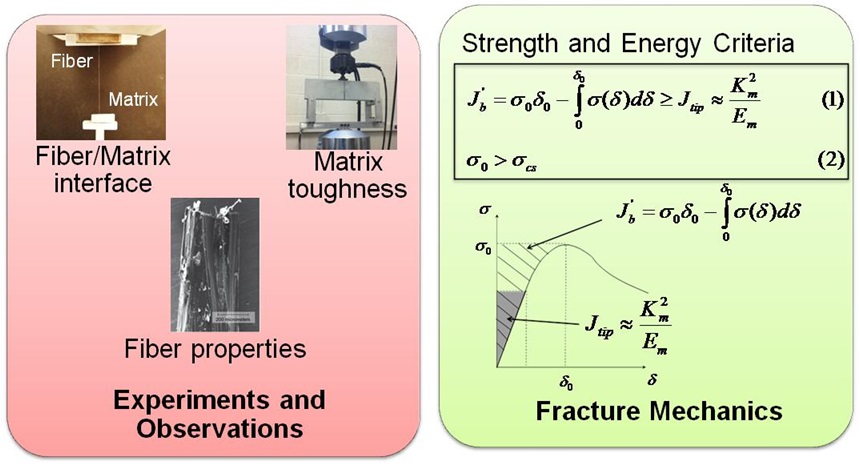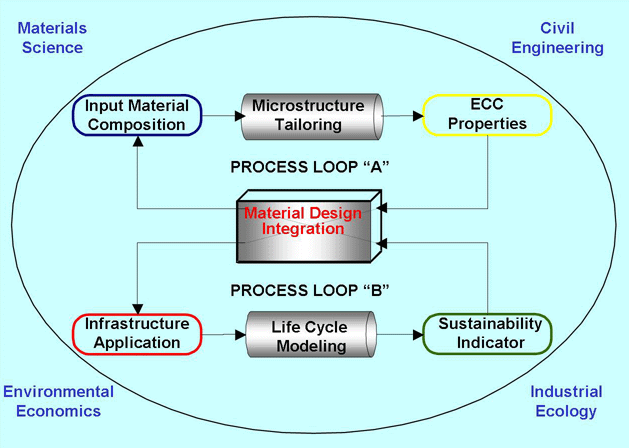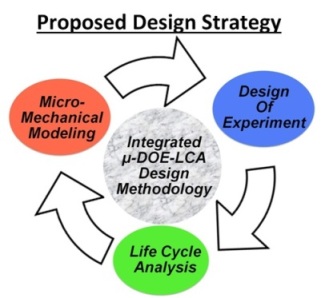|
|
| |
| Development and Characterization of Durable Geopolymer Composites for Truly
Sustainable Infrastructure Applications (NSF Grant Number: 1068005) |
| |
Motivation |
|
Goal & Approach |
|
Results so far |
|
|
| The primary goal of this project is to develop an entirely new family of truly sustainable fiber-reinforced geopolymer composites and characterize the engineering properties. Another, but significant expected achievement is the development of a powerful new design methodology to systematically produce high performance fiber reinforced composites. Based on the micromechanics-based design, fiber properties and fiber/matrix interface can be optimized for a given matrix. However, geopolymer matrices are expected to have larger properties variation than cement matrices since the source material for geopolymer (i.e. fly ash or slag) is an industrial byproduct in which quality control is not intended. Despite this, it is necessary to produce consistent geopolymer matrices. Therefore, matrix design as well as composite design should be integrated in the new design methodology. In addition, it is desired that the material greenness perspective can be also reflected in the design process.
Approach
The proposed project integrates micromechanical modeling, Design of Experiment (DOE), and Life Cycle Analysis (LCA) techniques to develop a novel design methodology. |
| |
 |
Micromechanical modeling is a powerful tool developed at the ACE-MRL to efficiently design ECC materials. This technique is based on fracture mechanics theories and carefully designed experiments to identify the optimal fiber properties and fiber/matrix interface for a given matrix. The micromechanical design methodology has enabled rapid development of a variety of ECC products, including self-compacting, lightweight, sprayable, and high early strength ECCs. |
| |
| Design of Experiment is a statistical design methodology to increase the efficiency of experiments. The primary purpose is to obtain robust data from much less experimental runs on a fraction of every combination of variables. For geopolymer matrix development where numerous variables are likely to be considered, the DOE technique can be helpful to design efficient experimental combinations. While DOE has been utilized in various fields of science and engineering, the application in geopolymer research has so far been limited. |
|
| |
| Both micromechanical modeling and DOE are used for gaining higher mechanical performances of composites. To quantify ecological properties of developed materials for actual field applications, LCA must be used. LCA employs environmental, social, and economic metrics to account for input and output factors at all life-cycle phases, from materials processing to infrastructure usage and maintenance, to end-of-life management. True sustainability of durable geopolymer composites is properly evaluated when the expected longer service life due to enhanced durability is taken into account in LCA, as well as the material greenness. |
 |
| |
|
The integration of micromechanical modeling, DOE, and LCA into a novel synergistic design methodology (μ-DOE-LCA) enables the systematic development of truly sustainable EGC materials. This synergistic methodology will be useful not only in the field of sustainable construction materials development, but will be adaptable to composite materials development for other industrial sectors. |
| |
 |
|
|
|
 |
|







